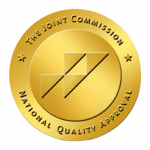Reputable drug treatment facilities, like the Harm Reduction Center, do not help you taper off crystal meth. To taper off a drug, the user slowly lowers dosage until their body no longer feels the need to use it. However, unlike tapering off opioids, crystal meth is an illegal drug, and trying to taper off this substance without proper medical help can be dangerous and lead to relapse or overdose.
In this article, we will discuss withdrawal, symptoms, as well as the safest treatment options for managing withdrawal and treatment options.
What is Crystal Meth
Crystal meth, or crystal methamphetamine, is a highly addictive drug that affects the central nervous system. Meth is a man-made stimulant that causes a short burst of euphoria, as well as feelings of excitement, anger, fear, and nervousness. It comes in the form of clear crystal chunks or shiny blue/white rocks. The typical street name for crystal meth includes “ice” or “glass.”
Some of the most common ways to consume crystal meth are by smoking the crystals from a glass pipe, inhaling the smoke through your nose, snorting the crushed powder, swallowing, or injecting it into a vein. Crystal meth is an extremely dangerous stimulant because it can cause permanent neurological effects.
Furthermore, one of the ingredients in crystal meth is pseudoephedrine, which is also found in cold medicines. This is why the federal government closely regulates products containing this ingredient. Today, there remains a legal meth product on the market in tablet form used to treat obesity and ADHD. However, it is closely monitored and only available by prescription.
Side Effects
Crystal meth has both short-term and long-term side effects which can vary in severity depending on the length of time used and the amount. Trying meth, even one time puts you at tremendous health risk. Some of the negative side effects of crystal meth use are:
- Nausea
- Vomiting
- Diarrhea
- Dry mouth
- Anxiety
- Depression
- Violence
- Seizures
- Hallucinations
- Overdose and death
Crystal Meth Withdrawal
Crystal meth creates such a powerful dependency for users that once stopped, withdrawal symptoms can last several weeks. These symptoms can be debilitating and painful and drive individuals to keep using to relieve the pain. Because withdrawal symptoms can be so severe, trying to deal with them on your own is not recommended. To taper off crystal meth one would have to slowly lower the amount used each time. Without proper medical assistance, this is nearly impossible. This is why seeking help from a rehab or treatment center will help manage withdrawal symptoms and provide you with the resources to help you stay sober after treatment.
Some of the common withdrawal symptoms of crystal meth are:
- Fatigue
- Increased appetite
- Agitation
- Insomnia
- Excessive sweating
- Paranoia
- Hallucinations
- Fever
- Red, itchy eyes
- Confusion
- Nausea
- Loss of motivation
- Tremor
- Suicidal thoughts
- Stomach ache
- Anxiety
- Severe depression
- Dehydration
Treatment Options
There are several treatment options when it comes to safely and professionally managing your addiction. Depending on the treatment facility, treatment options can vary. For example, some of the services offered at Harm Reduction Center in Boynton Beach, Florida are Integrated Medication-Assisted Treatment (MAT), Partial Hospitalization Program, as well as Intensive Outpatient Program. At HARC, treatment plans are tailored to each individual’s needs and look different from one client to the next.
Some of the overall treatment options to help manage crystal meth addiction include:
Medical Detox Centers
During medical detox, professionals monitor and supervise the detox process, help manage symptoms, as well as use MAT to help if necessary.
Short-term Inpatient Treatment
During short-term inpatient treatment, medical detox is surprised at a facility as well as different addiction therapy services throughout a specific period of time. This can be up to 30 days depending on the client and facility.
Long-term Inpatient Treatment
Like short-term inpatient treatment, long-term inpatient treatment also has the individual stay and go through detox and other therapies. However, this can last between 30 days to 18 months.
Partial Hospitalization Program
Rather than staying at a facility 24/7, individuals will report to a hospital setting where there are nurses and physicians available to provide clinical care to help manage and supervise withdrawal. Visits are required 5-7 days a week, lasting 4-8 hours a day, and oftentimes include programs providing individual and group counseling.
Intensive Outpatient Program
During intensive outpatient programs, you are required to report to a treatment facility between 2-5 days a week for 2-4 hours a day. During these visits, clients will attend group therapy sessions and individual counseling.
Depending on the facility, some provide medical care if need on-site or refer you to another facility for detox prior to starting this program. This is why at HARC a medical assessment is done on each client prior to treatment to evaluate if they need detox or can start other treatment programs.
Standard Outpatient
lastly, standard outpatient only requires an individual to attend therapy sessions a couple of days a week, lasting 1-2 hours a day. During this program, it is rare that a facility offers supervised withdrawal services, and may require each client to undergo detox before starting the program.
Get Help Now
If you or someone you know is struggling with an addiction, whether to crystal meth or any other substance, contact the Harm Reduction Center in South Florida. HARC offers different levels of treatment depending on each individual’s needs. Our mission is to help everyone struggling with addiction, and give them the tools to break free once and for all.














